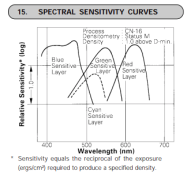mri_tech
Member
- Joined
- Nov 6, 2006
- Messages
- 12
- Format
- Medium Format
Greetings to all. I was wondering about the possibility of using night vision goggles as an aide for loading color film onto spools. I've read and heard you can do this with b&w, but could you do this with color since the color film is sensitive to all colors unlike the b&w film. Thanks for all the help and advice.
Tom
Tom













